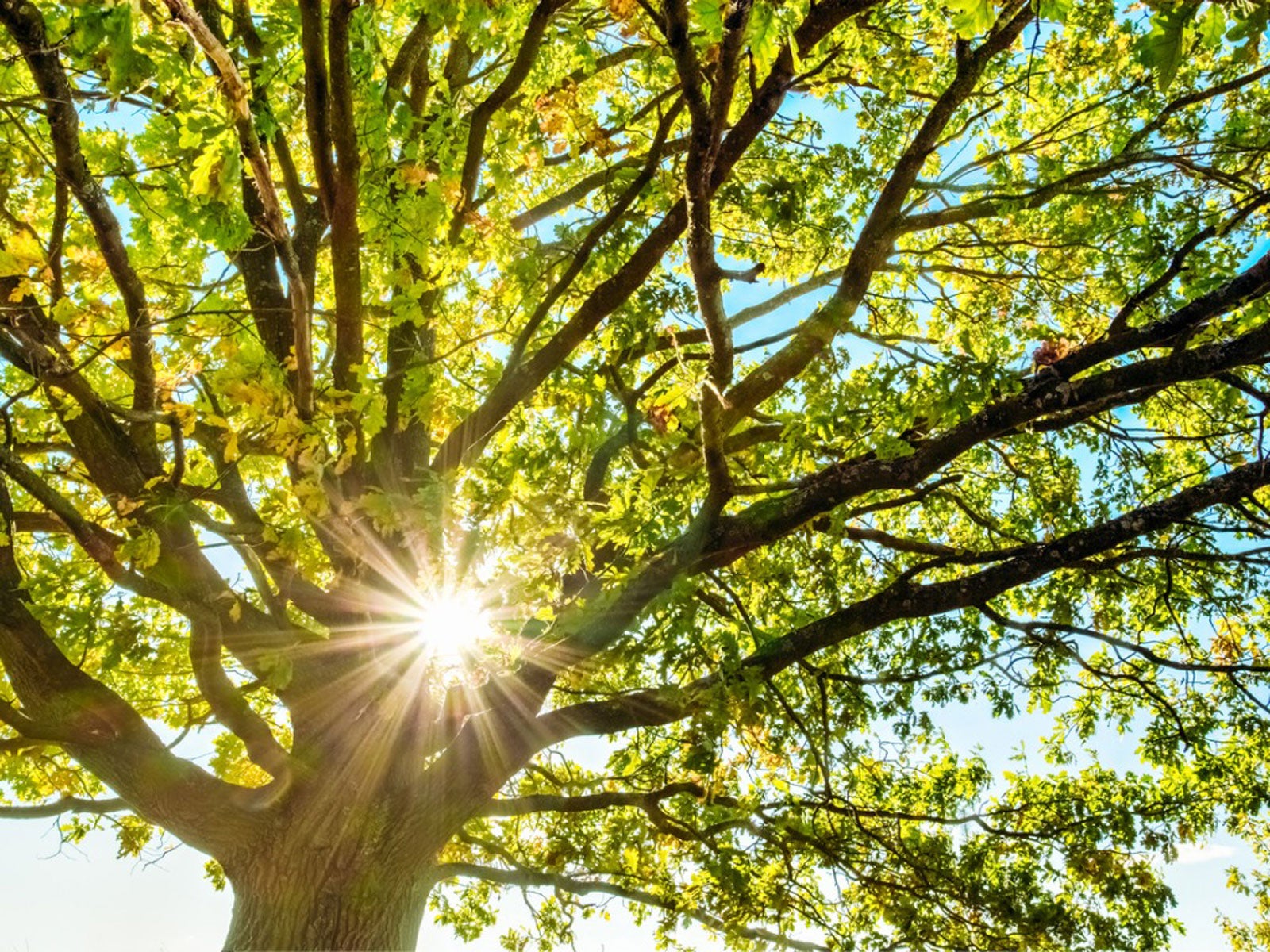Shade Trees For The Garden – Growing Shade Trees In The Northwest U.S.

Global temperatures are on the rise, even in the Pacific Northwest with its predominantly temperate climate. A simple (albeit temporary) fix is incorporating shade trees into the Northwest landscape to help reduce temperatures. Planting shade trees not only cools things down, but the shade they provide makes asphalt streets last longer, and the trees' root systems slow runoff that must otherwise be treated.
Interested in growing shade trees in Washington or other Pacific Northwest states? Read on to learn about shade trees for the garden.
Pacific Northwest Shade Trees
There are three things to consider before investing in shade trees for the garden.
First of all, decide where the tree is going. West and south exposures are the warmest, so trees should be placed to shade these areas during hot summer months.
Once you have decided on the placement of your shade trees, think about the canopy shape and size. If you want to shade the house during the heat of the day, choose a Pacific Northwest shade tree that has a broad canopy to shade the roof and reduce solar load. If you decide to plant the tree close to the house, install covered gutters to minimize maintenance, or plant trees half the distance from the home to allow for spreading of the canopy.
If you decide to plant shade trees in the Northwest landscape that are removed from the vicinity of the home, the roof will be exposed to the midday sun, but the tree will still shade the worst of the heat and the gutters will not become clogged with leaf debris.
Lastly, consider the driveway, which absorbs heat during the day and radiates it at night. Consider planting shade trees nearby but keep them several feet (1 m.) from the pavement to allow for root growth.
Gardening tips, videos, info and more delivered right to your inbox!
Sign up for the Gardening Know How newsletter today and receive a free copy of our e-book "How to Grow Delicious Tomatoes".
If you have a really narrow paved area you wish to shade, choose shrubs with a tree-like habit and with fibrous, not woody roots. A good example might include crepe myrtle cultivars like ‘Natchez,’ ‘Muskogee,’ and ‘Arapaho,’ with root systems that are less likely to damage pavement.
Types of Shade Trees in the Northwest U.S.
Trees can be a major investment, so once you have determined the above considerations and are ready to choose a shade tree, remember to think about what type of soil a tree needs, how much water, how the tree will be irrigated, and if the tree will be in a windy area.
Below are some shade tree ideas for use in Northwest U.S. areas, all of which are large in height at maturity, 50 feet (15 m.).
- Oak trees: Oak trees are a universal shade tree in many regions, and the Pacific Northwest is no exception.
- Oregon white oak: This tree is native to the West Coast and is extremely drought tolerant when established.
- Italian or Hungarian oak: Another extremely drought tolerant tree.
- Shumard oak: Not native to the region but a good shade tree choice with gorgeous fall color.
- Kentucky coffeetree: Kentucky coffeetree has huge compound leaves that cast dappled shade and is drought tolerant when established.
- Norway maple: One of the best and most commonly grown shade trees in Washington and other Pacific Northwest states is the Norway maple, of which there are several cultivars.
- Catalpa: Catalpa is a flowering shade tree for the garden with a rounded canopy and big, heart shaped leaves.
- Japanese pagoda tree: Another flowering shade tree that casts a dappled light is the Japanese pagoda tree. Choose canker resistant cultivars.
- Bald cypress: Bald cypress is a deciduous conifer with medium-green needles that turn orange in the fall. The habit of this tree is conical or pyramidal, which makes it perfect for tight spaces.
Smaller Pacific Northwest Shade Trees
- Yellowwood: This tree produces fragrant wisteria-like blooms but, unfortunately, may not flower until it is 10 years old. The tree has a broad, rounded canopy and long compound leaves.
- Osage orange: Osage orange ‘White Shield’ is a fruitless male that is heat and drought tolerant with glossy green leaves that turn a bright yellow in the fall.
- Black tupelo: Black tupelo is a pyramidal tree that develops a spreading crown as it matures with pretty red/orange fall color.
- Chinese pistache: Chinese pistache is extremely tolerant of a variety of conditions and produces brilliant orange and red leaves in the autumn.
- 'Shademaster' honey locust: This honey locust is almost the perfect shade tree, growing between 30 and 70 feet (9-21 m.) in height with a classic rounded canopy and small leaves that make fall clean up a breeze.

Amy Grant has been gardening for 30 years and writing for 15. A professional chef and caterer, Amy's area of expertise is culinary gardening.